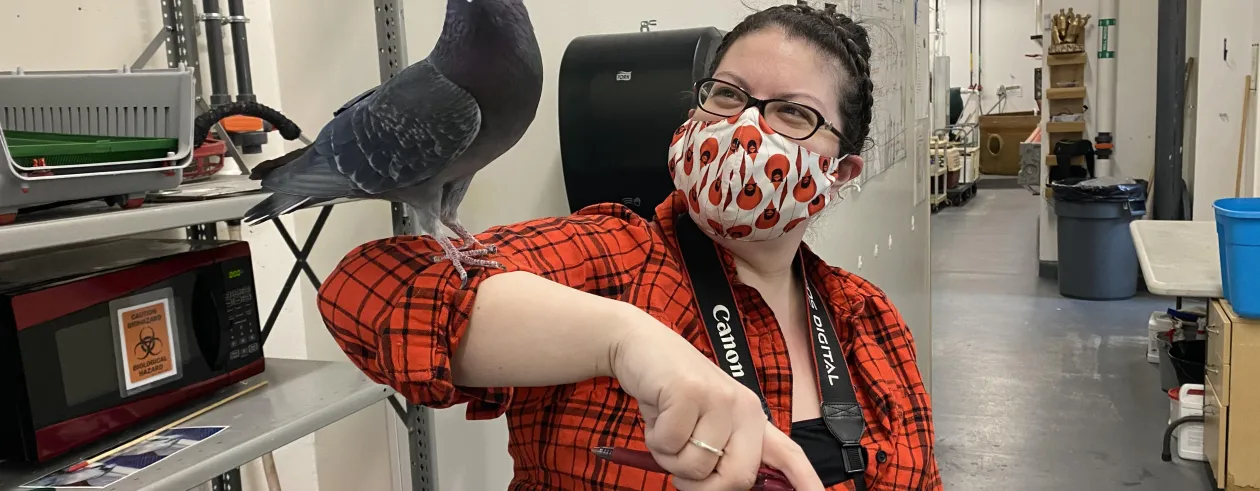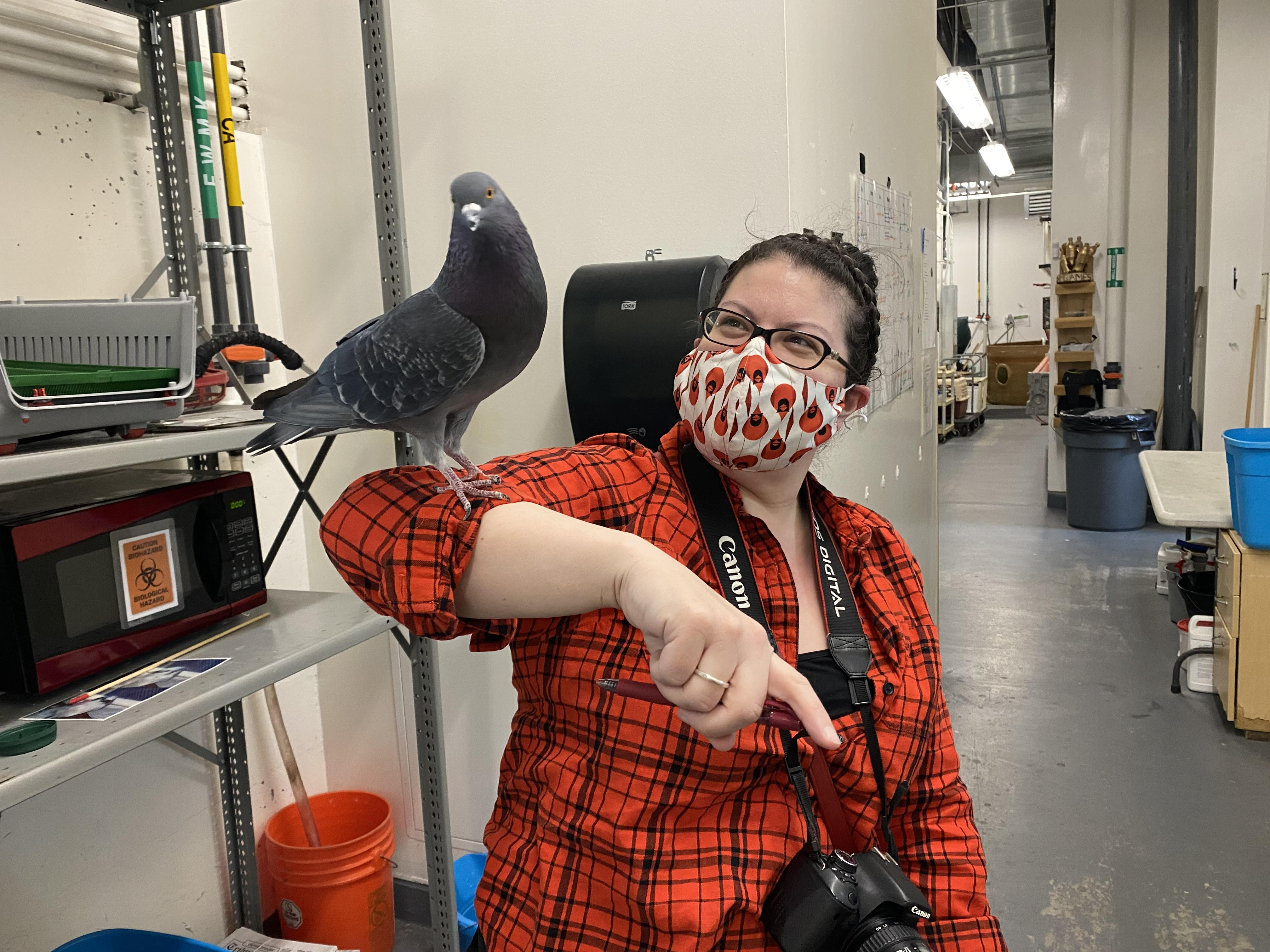
Have you ever traveled somewhere just to (hopefully) see wildlife? Maybe you’ve been to Yellowstone to see bison, bears, and legendary wolves. Perhaps you’ve traveled to the rocky coast of Maine looking for shorebirds. If you have, I hope you saw everything you wanted and more. In the Adirondacks, it’s no secret that extraordinary wildlife makes its home here, from otters to loons, moose to porcupines. Wildlife sightings are a treat for residents and visitors alike. As we all know, those sightings are never guaranteed, but there is one place in the Adirondacks where wildlife is abundant, viewable, and fascinating: The Wild Center.
I recently visited The Wild Center for a behind the scenes tour with Curator Leah Valerio. I learned so much about the care that the animals receive and their histories. It was the sort of adventure that makes you want to stay forever, quit your job, and start studying falconry. This was the day I managed not to freak out at the sight of snakes. I got nose-to-nose (through glass) with an albino wood turtle. It was incredible.
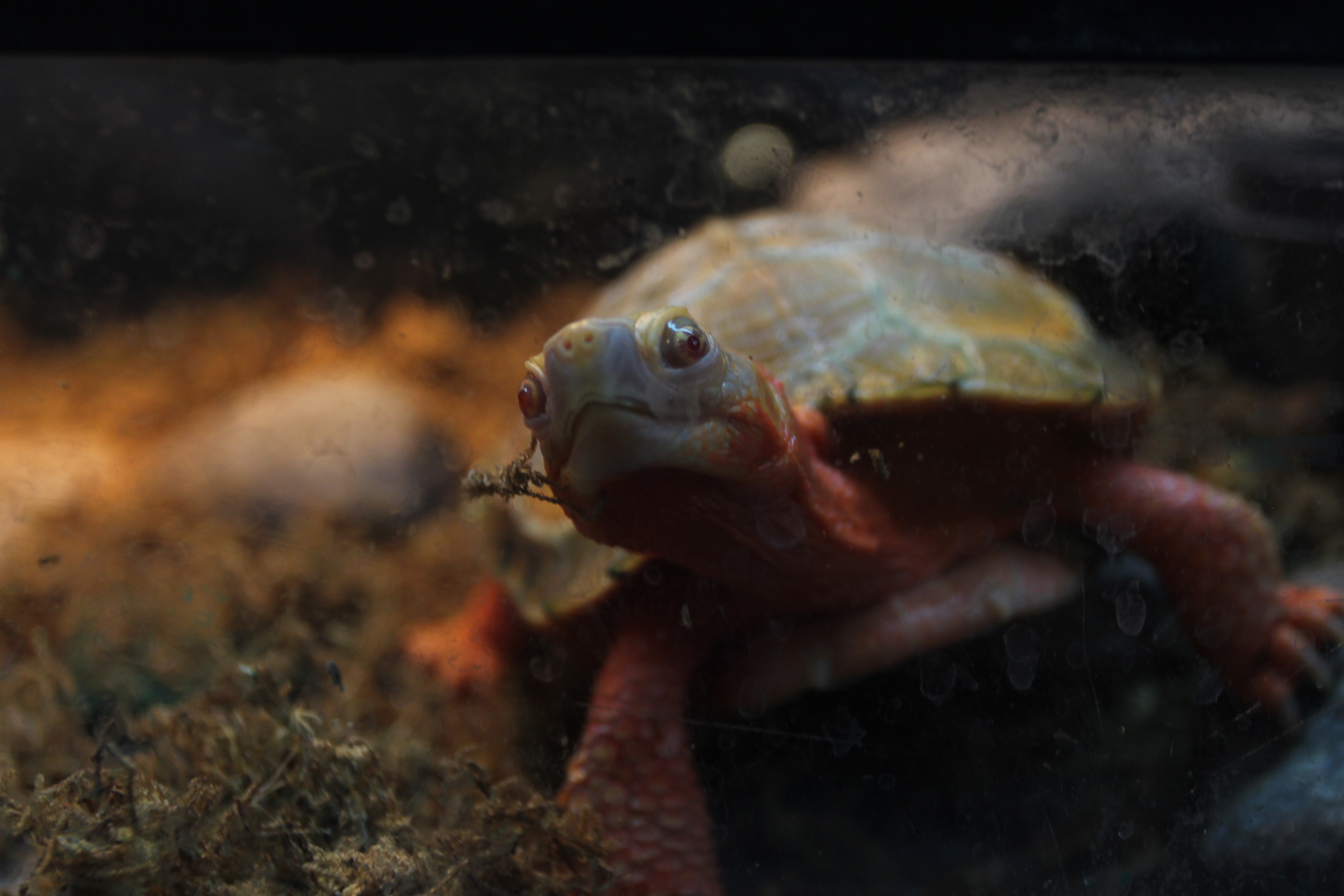
If you count the fish, there are roughly 300 animals living at The Wild Center. But the animals here aren't simply on display for us to admire. As cute or handsome or intriguing as they may be, they're not pets; they are wild animals being given a second chance. Many of them have had injuries that meant that survival in the wild was impossible. Leah describes the animals as having the most important jobs at The Wild Center. Each animal, no matter how small, has a purpose and plays a role in the Wild Center mission to engage the public and inspire a passion for the Adirondacks and the natural world all around us. Not just the stars of the show, they have much to teach us about living in harmony in our ecosystem.
Behind the scenes, there is exceptional work being done to care for the animals. A whiteboard in a hallway reads, "Our quality of work is their quality of life." Everywhere I went, I didn't just learn about species — their care, behavior, and history, but about the animals as individuals, and that is a story worth telling.
Stickley and friend, the porcupines
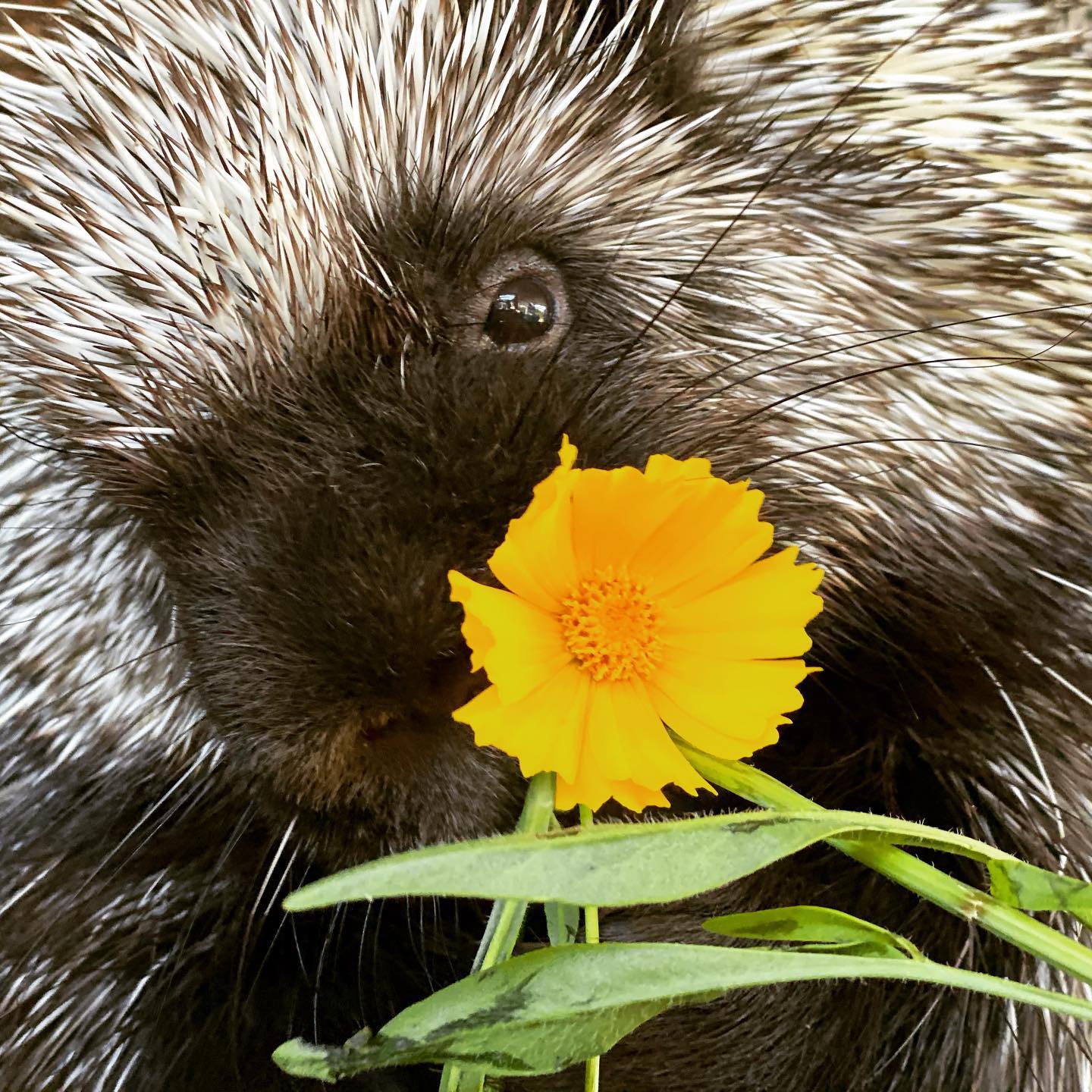
Stickley was once a "porcu-pet," and is therefore very familiar with humans. As a baby he was attacked by a dog, leaving him with injuries that would make surviving in the wild much more difficult. In many parts of the world, porcupines have a bad reputation, largely due to their appetite for woody, leafy plants. Yet their appetites are beneficial for other animals: in discarding twigs, sticks, and branches, they create potential new habitats for other animals. Up in the trees, birds will often make their homes in abandoned porcupine dens! Stickley is a great ambassador for the species, helping staff teach visitors that porcupines have a place in our ecosystem and that they're not a nuisance. It's fun to simply watch him sleep, climb, and eat!
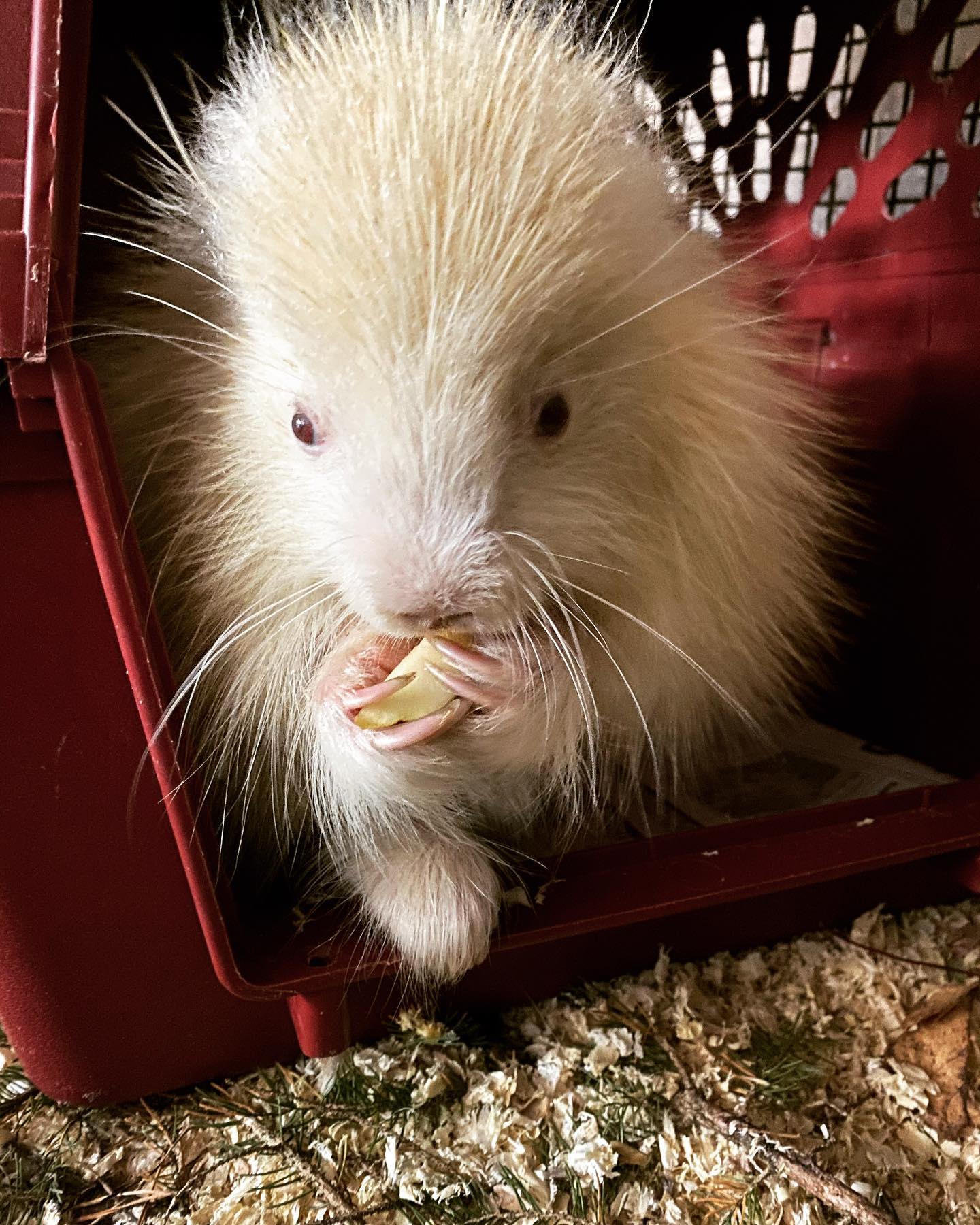
Joining Stickley at The Wild Center this year is a beautiful albino porcupine that hasn't been named yet. Still shy, she is adjusting to her new home. Seen as a nuisance, this porcupine was trapped and as a result suffered a leg injury. The health and wellness of every animal is the most important element for the staff here, so this porcupine will be given plenty of time to get comfortable. She'll also receive regular assessments to ensure she is healthy and that she gets enough enrichment to keep her happy, in porcupine terms. One of the things stressed at The Wild Center is to view all of the animals in terms of their needs, both as species and individuals. It's easy for humans to see a solo animal and think they might be lonely, or think an enclosure is not the right size, but those are human concepts and the staff is careful to avoid that.
Porcupine fun fact: a baby porcupine is called a porcupette!
Louie, Scarlett, Squirt, Tawine, and Rohsnore, the otters
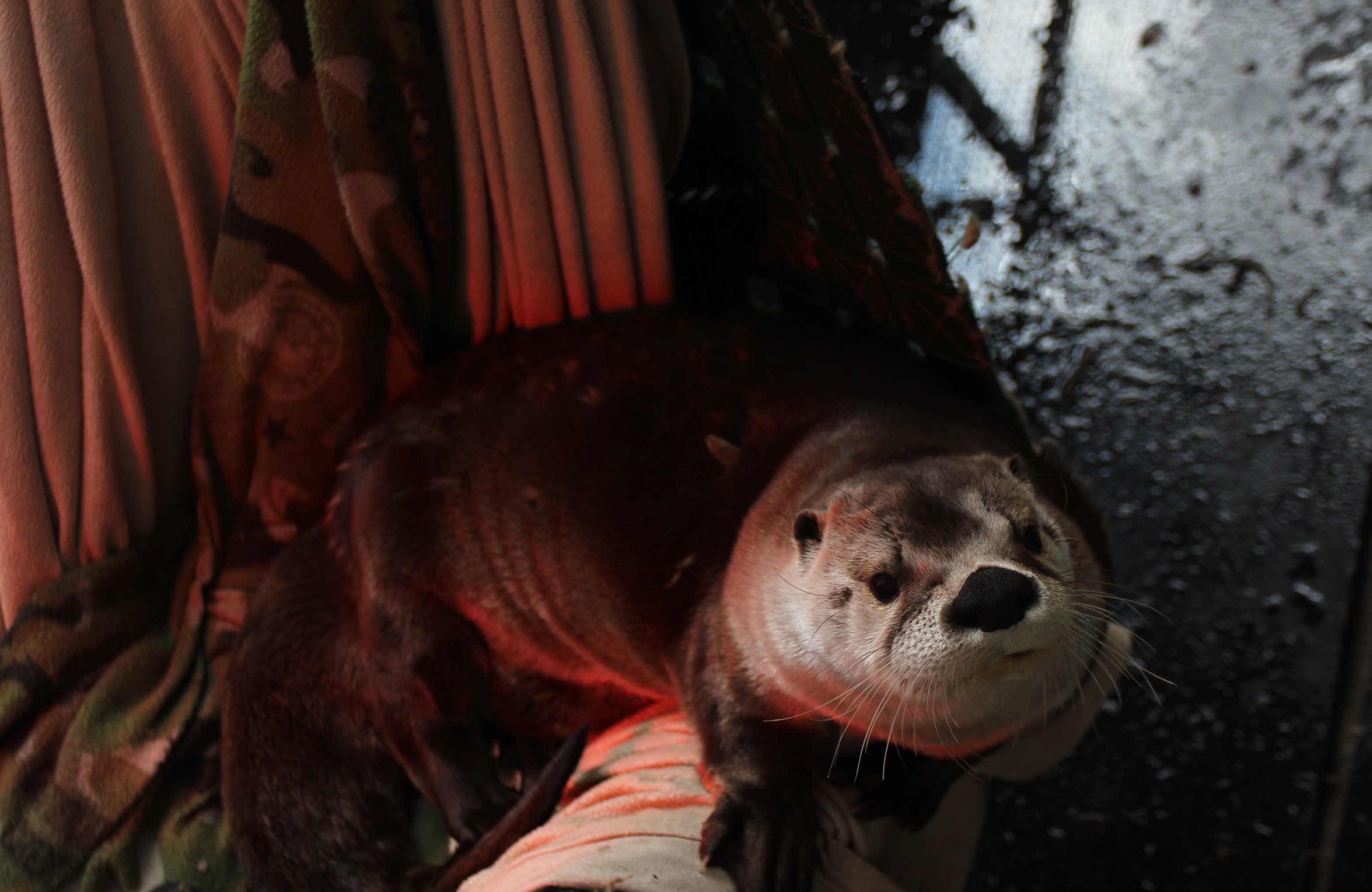
Otters are incredibly cute. We're all agreed on that. They are also curious, active, and playful. They love to swim, some more than others. The Wild Center is currently home to four otters and each is unique. The animal care techs can tell them apart, and if we all spent enough time there, we could too!
Louie came to The Wild Center from Montana, where he was found as a young orphan. While otters generally live to be 10-12 in the wild, Louie is a grand 19. Like all other animals, that means he's a little slower, a little grayer, and his joints are more arthritic. These needs are taken into account with lower bedding, shallower pools that are easier to get in and out of, and medication to keep him comfortable. He loves afternoon naps and has a broad snout and nose.
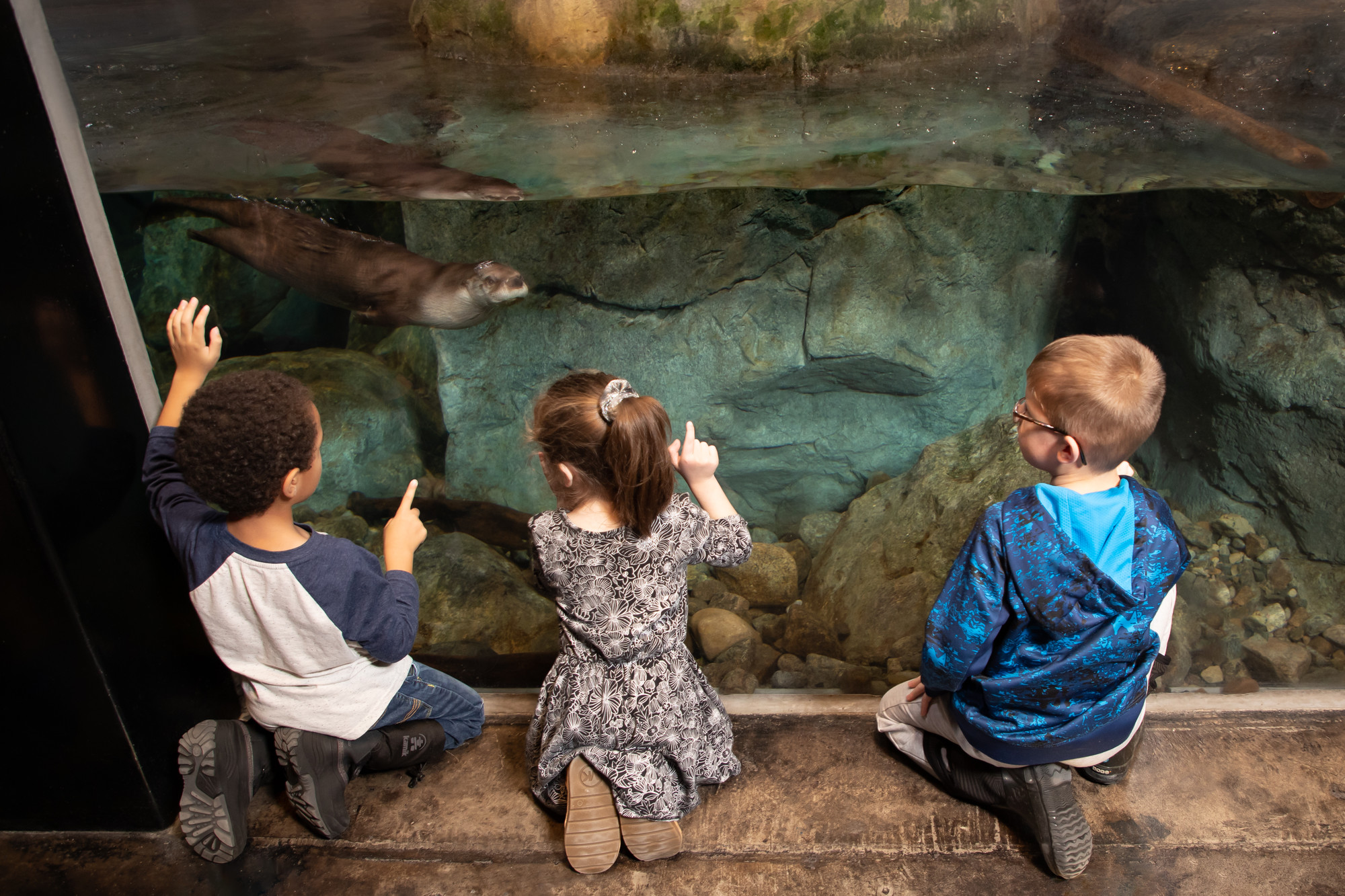
Squirt was originally from Michigan; he was found by a farmer's dog, injured, and eventually found a home at The Wild Center. He too is a senior otter and takes things a bit more easily than the younger, more rambunctious otters: Scarlett, Tawine (pronounced "Da-wee-neh"), and Rohsnore ("Loh-snow-leh"). With plenty of room to run around, from the outdoor play yard to the daytime enclosures to the publicly visible Otter Falls pool area, these three love to run around, swim, engage with enrichment toys, and swim some more. When given a choice, Scarlett will choose to be in the pool and can spend up to 16 hours a day swimming! Tawine and Rohsnore (these are Mohawk names chosen by schoolchildren in Akwesasne) are the youngest: they were trapped at a crayfish farm and now they help teach us about wildlife in the Adirondacks!
Otters may look cute, but they have very strong jaws and incredibly sharp teeth, which is one reason why otters don't make good pets and why the animal tech team does not have hands on interactions with the otters. That's not say that they don't get plenty of interaction; it's simply done properly for everyone's safety. While I was meeting the otters, I had the wonderful opportunity to "scratch" Squirt with a training tool: a toothbrush mounted to a length of PVC pipe. Squirt loved the feel of the brush and moved his head so I could scratch near his ears and under his chin! As Leah pointed out, each animal has its own levels of comfort with humans, sensory likes and dislikes, and social behavior. What one otter might enjoy another might not.
Otter fun fact: when in the water, a group of otters is called a raft!
Livia, the rock dove
Of all the animals I encountered at The Wild Center, Livia was the one who got the closest to me, literally. Livia has issues with her beak: it is much softer than it should be, and broken at the tip. Because this can seriously hinder her ability to feed, she is cared for at The Wild Center; Leah is even going to try to fashion a prosthetic for her, to help her eat. She's a program animal now, meaning she will participate in public programs, once she gets a bit more used to people. She is very inquisitive, eager to explore, but also shy. She and Leah are working together on getting her more comfortable outside of her enclosure. During my visit, Livia hopped on to Leah's arm; after a few photo opps, she flapped up into the air, hesitated, and landed on my cautiously outstretched arm. There, she made small cooing noises at me and we happily posed for a very memorable photo.
Rock dove fun fact: this species was crucial to some of Charles Darwin's work on evolution.
Birds, birds, birds!
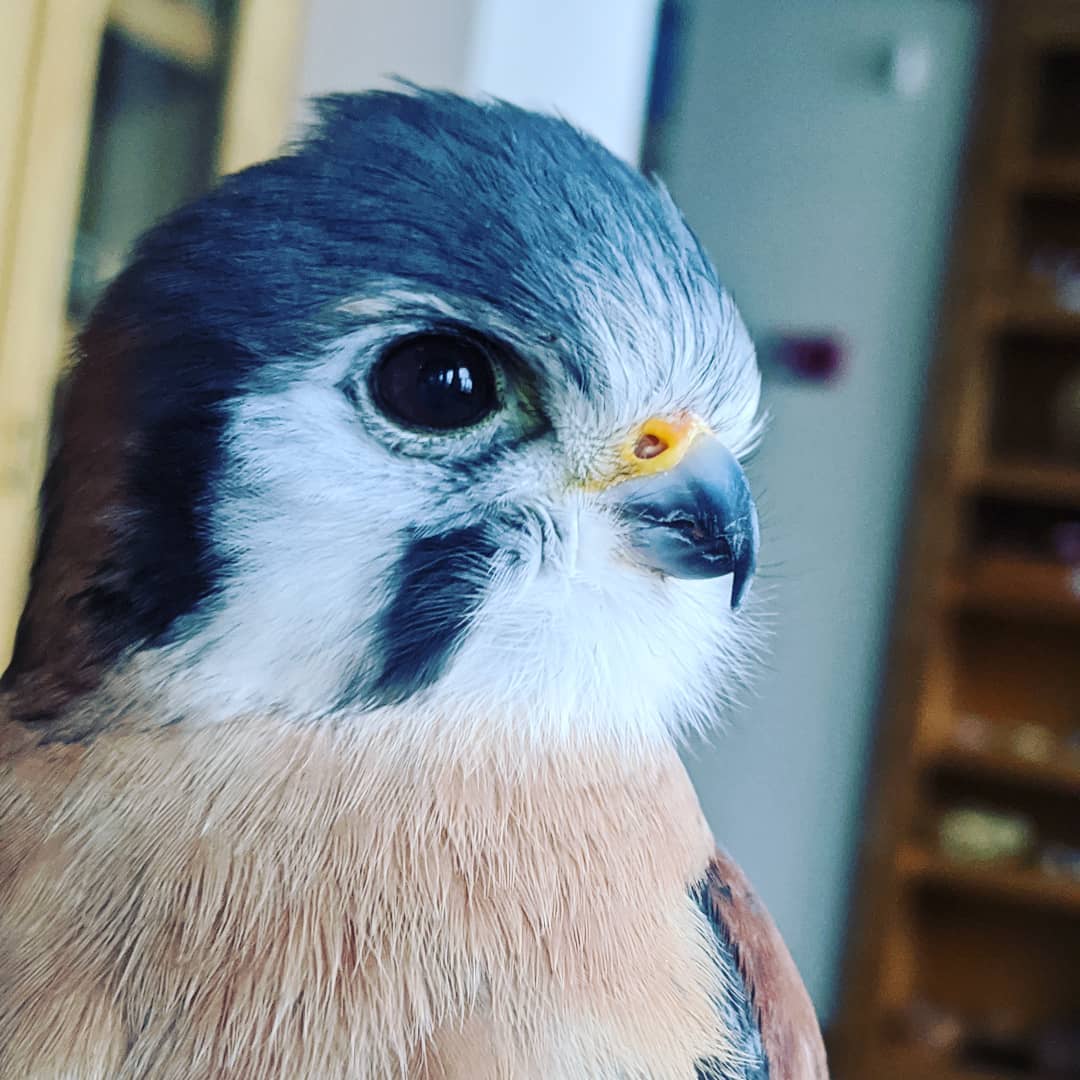
Did you ever see a bird suddenly swoop down on its prey, or hear the call of an owl in the dark of night? It's fun, but how often do you get to see those birds up close? At The Wild Center, two American Kestrels, two Eastern Screech Owls (gray and red morphs), and two ravens are a key part of the animal ambassador team, which allows visitors to get up close to some extraordinary birds.
Pictured above, SB is an adult kestrel who was orphaned early in life. As a result, many of his behaviors and vocalizations are those of a juvenile kestrel; he was likely never exposed to enough adult kestrel behavior. He is physically healthy, but because he imprinted on humans early in life, he's mal-adapted for living in the wild. The female kestrel at The Wild Center is named Zuma. She's a retired falconry bird and is spending her "retirement" being well looked after and admired by curious visitors. She and SB help teach visitors about kestrel behavior and their role in the environment (think: rodent snacks!).
Also on the avian team are Luna, a gray morph Eastern Screech Owl and Helios, a red morph Eastern Screech Owl. Screech Owls are small, noisy, with markings that make hiding in trees very easy. Both Luna and Helios came to The Wild Center because they were injured in car collisions. Now they take part in animal encounters, which offer great insight into these fascinating nocturnal, socially solitary birds.
Bird fun fact: kestrels can perceive ultraviolet light, which enables them to find prey by "seeing" traces of urine.
Plan your visit!
This is just a small glimpse at the many animals that live at The Wild Center and receive top-notch care. Among other animals you can see when you visit are snakes, wood turtles (including one albino), painted turtles, Wood Ducks, salamanders, and so much more. All of the animals help staff educators tell interesting stories about the Adirondacks and why it is so important to appreciate and protect wild lands.
When you visit in 2021, please be aware that many Covid protocols are still in place, for everyone's safety. As of April, indoor exhibits are closed, but may re-open later in the year. Outdoor enclosures have been adapted to provide visitors with opportunities to observe the otters, ravens, and porcupines. Animal encounters will continue and offer excellent opportunities to learn more about the Adirondacks and the animals that live here. Leah sees the experience of visiting The Wild Center as a gateway, providing opportunities for visitors learn and make explorations of the Adirondack Park richer and more dynamic.
To learn more, visit the Wild Center website, where you'll find excellent videos, at-home activities, and information about exhibits and special events. Why not book one of the places to stay near the Wild Center and enjoy some of the great restaurants, shops, and other attractions in the area? I have to warn you, though: if you visit The Wild Center once, you'll want to come back again and again!
